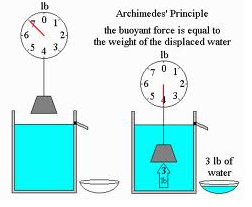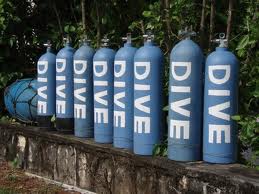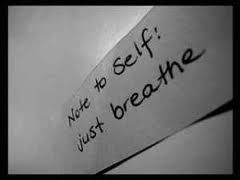When we imagine an ideal diver we instinctively think of someone who can effortlessly glide through the water or hover just a few inches above the bottom. One might object that there is more to being a good diver than just having a good buoyancy control and it is very true. But buoyancy control is an absolute foundation for everything else in diving.
Buoyancy control is a complicated matter. Development and fine tuning of this skill never stops, but there are three basic factors that affect buoyancy: the weighting, the trim, and the position. In this article I’d like to touch on one of these three – the weighting.
When we talk about buoyancy we really mean neutral buoyancy. Thus the goal of buoyancy control is an ability to achieve neutral buoyancy throughout the dive. As evident from the Archimedes’ principle of buoyancy the diver can change his or her buoyancy by changing volume and/or weight. The state of neutral buoyancy will occur when upthrust caused by displaced water is counterbalanced by the diver’s weight. The more water is displaced by the diver the higher the upthrust and the more weight is needed to counterbalance.

To complicate the matter, buoyancy of the diver changes throughout the dive with or without diver’s “input”. Let’s consider different factors that affect the buoyancy.
Salinity of water
As part of the Open Water course all divers learn that more weight is needed when diving in the ocean as opposed to diving in lakes or rivers. Water displaced by a diver in the ocean will weigh more than the same volume of fresh water displaced by the same diver in a lake or a river, because of all the salt dissolved in the ocean water. Thus, as follows from Archimedes’ law, the ocean water will generate more upthrust and will require more weight for counterbalance. On average, the ocean water is 1.025 time heavier than fresh water. It doesn’t look like much, but it might result in a couple of pounds of weight on your belt. Normally divers don’t have to worry about the effect of salinity if they consistently dive in the same environment. And even if the divers regularly move from a lake to the ocean and back, the weights could be adjusted before the dive for the new environment. There is, however, one exception when a diver can encounter both fresh and salt water during the same dive. Such exception is diving in cenotes where horizontal layers of ocean and fresh waters exist but don’t mix. This phenomenon is known as halocline.

Neoprene
Another factor that greatly affects the buoyancy is thickness of the diver’s neoprene exposure protection. Neoprene is essentially a porous rubber. Each microscopic pore is a sealed gas bubble. Because of the gas’ poor thermal conductivity, neoprene has excellent thermal protection properties. The thicker the neoprene, the “warmer” the suit. There is, however, a drawback: the increasing pressure under the water compresses neoprene’s gas bubbles making neoprene thinner. As the result, at greater depths, a neoprene wet suit reduces its volume and becomes less effective as thermal protection. While the diver’s weight remains the same, reduced suit’s volume will affect the diver’s buoyancy. The thicker the suit, the more it compresses with greater depth, the less buoyancy it has. The effect of compressing neoprene could be very noticeable. An average air filled neoprene suit will lose approximately ½ of its buoyancy at the depth of 33 feet, ⅔ at the depth of 66 feet. At 100 feet it will effectively become crushed and lose almost all of its buoyancy (as well as thermal isolation properties). Such loss of buoyancy could be counteracted by putting gas into BCD. Wet suit will regain its volume during ascent as the ambient pressure drops. The divers must remember to purge gas from BCD during ascent to compensate for the gas expansion and increasing volume of the suit. Failure to do so will result in too much buoyancy and cause a runaway ascent.

Gas cylinders
Another factor that must be taken into account when thinking about buoyancy is weight of gas in the cylinder. When we say “light as air” obviously we don’t refer to 80 cubic feet of gas under pressure of 3000 pounds per square inch. As a matter of fact, weight of the gas in 80cf cylinder under 3000psi is about 6 pounds. It’s a significant weight. Six pounds of positive buoyancy will make diver fly out of the water. Well, it’s six pounds if the diver decides to suck his or her cylinder dry. If the diver ends the dive with 500psi of gas in the cylinder, he or she uses up about 5 pounds of air. It means that the diver is 5 pounds lighter at the end of the dive just from breathing the gas, and therefore is experiencing additional 5 pounds of upthrust. That’s still a lot of unwanted positive buoyancy.

The actual weight of gas will depends on the cylinder’s size (volume) and service pressure. This information can and should be obtained from manufacturer by every diver who owns a cylinder. Just as an example, here is a buoyancy table for one of the most common gas cylinders out there, Luxfer Aluminum 80cf cylinder (numbers are given for salt water):
| Service Pressure | Capacity | Weight | Full | ½ Full | 500 psi | Empty |
| 3000 psi | 77.4 cf | 31.5 lb | -1.7 lb | +1.3 lb | +3.2 lb | +4.2 lb |
From this table we can see that when the cylinder is full it has a negative buoyancy of 1.7 pounds. With 500psi left it will have positive buoyancy of 3.2 pounds. It means that during the dive which ends at 500psi the buoyancy of this tank will shift by 3.2 – (-1.7) = 4.9 pounds.
It is worth noting that gas cylinders get progressively lighter throughout the dive as opposed to wet suits that change buoyancy depending on the depth.
Diver’s body
So far we’ve been talking about buoyancy changes that cannot be controlled by a diver, not directly anyway. The divers cannot really do anything about compression of neoprene suits or depletion of the gas, short of diving bare-skin and not breathing. One thing the divers should be able to control is expansion of thoracic cavity, also known as chest. We inhale, chest expands, our body volume increases, while the weight remains the same – buoyancy increases. We exhale, chest collapses, our body volume drops – buoyancy drops. This breathing cycle is the basis for buoyancy control. The vital capacity of the lungs (i.e. a maximum volume of air a person can voluntarily expel from the lungs after a maximum inspiration) averages around 4.6 liters for men and 3.6 liters for women. In salt water these volumes translate into 10.39lb and 8.14lb of lift correspondingly. It’s a lot of lift that can be generated just by fully expanding the lungs. But is would be extreme. During normal breathing the lungs volume changes by about 500ml for men and 390ml for women (also known as tidal capacity), which translates into 1.12lb and 0.89lb of lift in salt water. One pound buoyancy shift is enough to give a diver gentle rise on a normal inhale and an equally gentle sinking on a normal exhale.

Buoyancy compensator
Now that we know why and how the diver’s buoyancy changes throughout the dive, the role of buoyancy compensator becomes clearer. Buoyancy compensator is needed to counterbalance diver’s weight beyond the lung’s capacity. As the diver becomes less buoyant with increasing depth (thanks to neoprene), he or she will have to compensate for the loss of buoyancy by further expanding their lungs (i.e. breathing at the top of the lungs). Eventually, breathing like this would become very uncomfortable or even impossible. By putting a little bit of gas into the BCD the diver can “take the pressure” off the lungs and regain the ability to breathe comfortably. As the diver continues to descend and the ambient pressure rises, the neoprene and gas in the BCD continue to shrink, so the diver pumps a little more gas. As the diver ascends, the neoprene and gas in the BCD begin to expand, so the diver should periodically purge the gas from the BCD to keep the ascent rate in check.

BCD is not a primary tool for buoyancy control. In fact, the divers should strive to minimize amount of gas in their BCD to just the right amount that would allow the diver to breathe comfortably. However, it is possible to reach the BCD’s lift capacity. Many manufacturers offer so-called travel size BCDs with reduced maximum lift capacity. It is not unusual to find BCDs with as little as 20 pounds of maximum lift. There are circumstances when it’s just not enough. Imagine a diver who descends to a depth of 100 feet wearing a 5-mm neoprene wet suit and a 20lb BCD. The 5mm neoprene suit could have as much as 25 pounds of positive buoyancy. At 100 feet, when neoprene loses practically all of its buoyancy, the diver will be 25 pounds heavier, but the BCD can only offer 20 pounds of lift to offset all this weight. Such combination of factors could potentially escalate to life threatening situation and presents an unacceptable level of risk. There are several ways to mitigate the risk. The obvious solution is to choose a larger BCD. If not available, the diver can choose to dive with thinner neoprene suit. One could also choose a different dive site with a shallower bottom.
Choosing weights
It is an old wifes’ tale that “a little extra weight never hurts”. It hurts, and it hurts a lot. Too much ballast could produce a few problems for the divers such as:
It increases drag through the water and subsequent strain in the diver’s physical activity, causing higher gas consumption and ultimately shortening the dive.
It forces divers to “play” too much with the BCD spending precious gas and adding unnecessary workload.
And it could potentially create unsafe conditions if at any point of the dive the total weight of the diver with the equipment exceeds the BCD’s maximum lift capacity.

On the other hand, too little weight makes diving very unsafe by setting conditions for uncontrolled ascent.
Generally speaking, the divers should strive to choose the minimum amount of weight that:
1. Would allow the diver to start descending at the beginning of the dive.
2. And would allow the diver to maintain neutral buoyancy at the end of the dive during the safety stop.
The standard weight check taught during the Open Water course is a great start:
The diver should be able to float at eye-level while holding medium breath (without straining) and with absolutely NO gas in the BCD. To ensure that the BCD is totally deflated, the gas could be sucked out through the mouth piece on the BCD’s inflator hose.
The water has to be too deep to stand in.
It is important to remain motionless as any movement of fins could generate vertical movement and skew the result.
The regulator or snorkel must be in the mouth.
If the diver floats higher than eye-level, then there is too much buoyancy and more weight is needed.
If the diver starts sinking even while holding medium breath, there is too much weight.
The diver should start slowly sinking after full exhalation.
Whatever weight we have on the belt at this point meets the first objective: it allows the diver to start sinking at the beginning of the dive. We know, however, that at the end of the dive the diver will weigh less due to depletion of gas. The diver then should add the appropriate amount of weight which would compensate for the spent gas. For example, if a diver uses a 80cf aluminum cylinder with 3000psi of gas in it and plan to finish the dive with 500psi, then he or she should add 4 or 5 more pounds (as described in the section on gas cylinders).
Now, with additional ballast on the belt and no gas in the BCD, the diver should be able to sink pretty rapidly. If the diver wears skin or uses no exposure protection at all, then the overall buoyancy will not be affected by neoprene compression. The additional 4-5 pounds of weight could be easily offset by breathing. In this situation the diver might not even need to put ANY gas in their BCD while still being able to maintain neutral buoyancy during the safety stop when the gas in the cylinder is depleted.
The weight check procedure is not complicated but could be time consuming. It might take a few attempts to get the weight right. It might also require help from dive buddy or dive master to check if the diver floats at eye-level and pass additional or take away extra weights. The diver may or may not have an opportunity to do so on the boat when “the pool is open” and everybody rushes to the water. Thus it’s important to be able to estimate the amount of weight needed. Eventually, divers develop some sense of weight. But it would really help if the divers recorded the weight information in the dive log along with an abbreviated list of equipment used and comments like “feel heavy”, “feel light”, “perfect”. This way the divers could either look up the right weight or make more educated guess. With the time one could compile a table that lists different combination of equipment with the correct weight and use this table for dive planning.
Michael Proekt
PADI Instructor
Dive Cooperative

